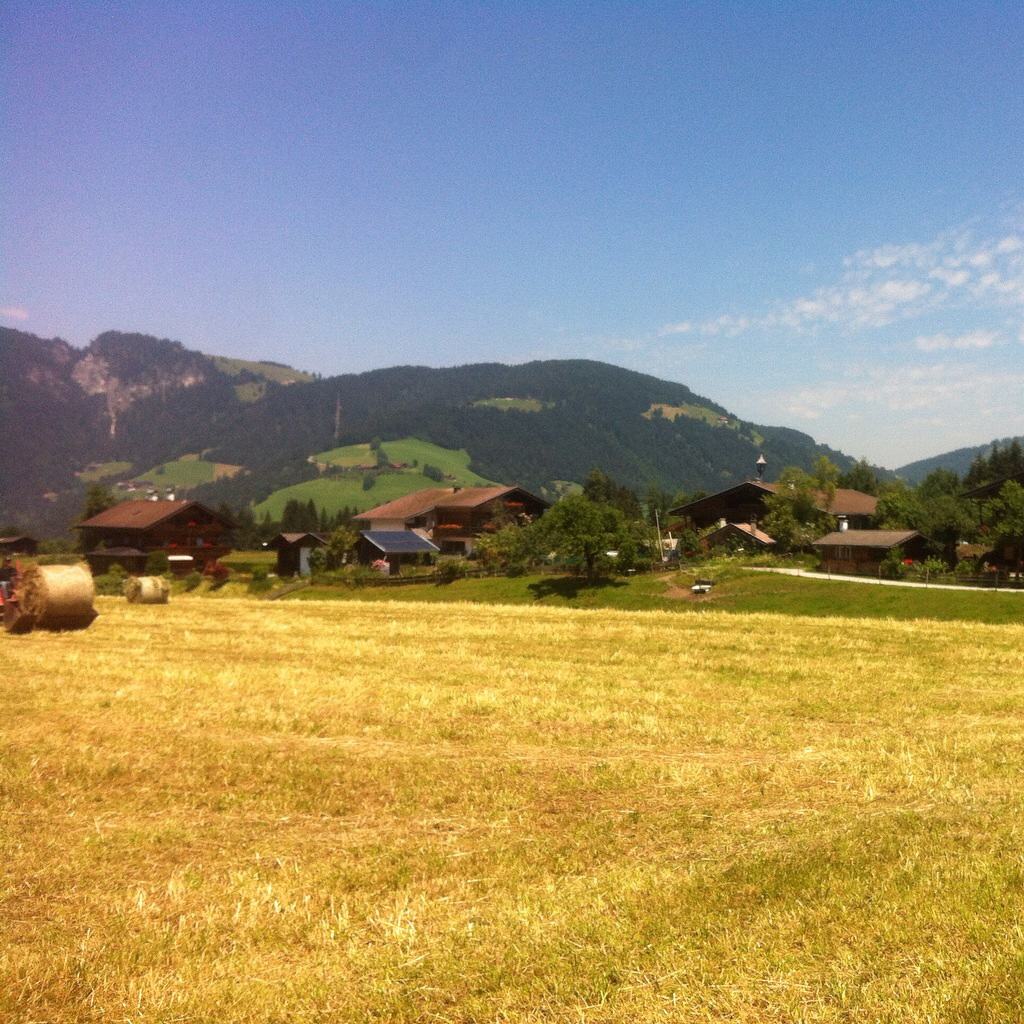The story goes:
“Once upon a time, the Wildschönau valley used to be one large lake. A dragon lived in the lake, terrifying the local population. One day a brave farmer decided to face the dragon and managed to trick it and kill it. Whilst falling to its death, the dragon bit into the Wildschönau mountains which delimited the lake, allowing all the water to flow from the valley to the river Inn, and thus creating the Kundle gorge and the beautiful Wildschönau high valley.
The dead cadaver was blamed for the outbreak of the plague which resulted in many deaths. Only one man from the Wildschönau and a young girl from the neighbouring Brixen valley survived. The pair married and their offspring populated the present inhabitants of the Wildschönau.”

Today the Kundle gorge is considered one of the prettiest gorges in Austria: a popular walk starts in the woods through Mühltal and runs through rolling meadows and on through the gorge which is home to impressive white water rapids for another looking for an adrenaline rush!
There is also the Bummelzug, one of the two slow trains in the valley. This runs daily throughout the summer from Mülhtal to the beginning of the gorge (from 10am to 4pm, hourly).
But how is the Wildschönau still so closely connected with its legendary dragon?
Well, first of all, the dragon is pictured on the coat of arms of the Wildschönau gemeinde, on a dark blue and black background (these are also the colours of the Wildschönau football club).
The famous “cure-for-all” Krautinger Schnapps (or Dragon Schnapps) has been uniquely distilled in the Wildschönau Region from locally grown White Beet since the mid-18th century. To call it simply ‘schnapps’ is considered almost an insult! Krautinger is a cure-all elixir and a well-loved after dinner drink all rolled into one. By the royal decree of Empress Maria Theresia, only farmers in the Wildschönau are permitted to distill this miracle cure.
The process is however, not as simple as it may sound. The White beet (also known as May turnip or autumn turnip) is harvested in summer and autumn, cleaned, squashed and reduced to a third of its original mass, before being fermented with yeast and distilled. Experts are convinced that many factors play a decisive role in the quality of the schnapps. Using electric kettles is not advisable, whereas heating upon a beechwood fire is generally accepted. The seeds are also an important factor: Krautinger farmers refuse to use industrially produced seeds and cultivate them themselves.
“Krautinger” schnapps is an ancient cure-all which local people swear by for indigestion, flu and stomach problems of any kind.
The highlight of the year is the Krautinger week which takes place in October and where the new schnapps is unveiled and the specialities enjoyed by guests from all over the world.
Last but not least, the dragon features on all signs as you enter the Wildschönau valley, so look out for them when you are next here!
Words by Dolores Balotti, Resort Representative in Niederau.